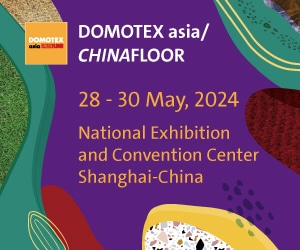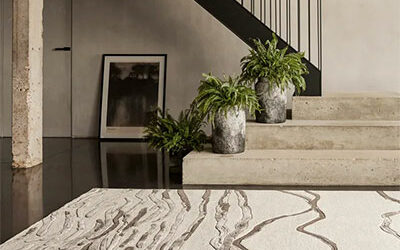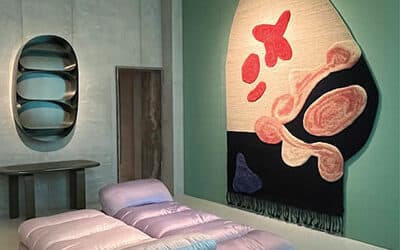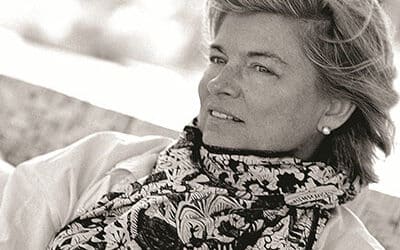Some people are natural disruptors. Take Kavita Parmar and Marcella Echavarria, textile fanatics and allied partners behind the annual Xtant event, which celebrates slow sustainable craft production (see COVER 71). The duo’s recent rug launch fits into this paradigm perfectly. Atelier Talasin is a new Moroccan rug brand with different outlook, what Parmar describes as ‘a unique story’.

Parmar formely worked in the fashion industry, founding traceability-focused clothing brand IOU Project, and is now a consultant for clients like Nike and Levi’s. The seed that brought the new brand to life was an approach by textile producer Shane Ordovas. The initial idea was for a new range of textiles, but Parmar decided in favour of a selection of rugs handmade in Morocco, where the half-Spanish, half-Irish Ordovas lives and works.
For this exciting, ethically minded project, Parmar brought in her dear friend, lifestyle specialist and textile curator Echavarria, whose forte is branding luxury and sustainability. The two friends had a very clear idea in mind for the new rug collection: to create a new story for Moroccan rugs by going back to rug traditions of the area, repecting the makers and really starting from scratch. This was no small undertaking for Ordovas, who took on the challenge with gusto.

‘A textiles studio, nestled in the foothills of Morocco’s High Atlas Mountains in the village of Ait Moulay, near Marrakech’ begins Atelier Talasin’s brand book, which documents every detail of the company’s ethos and production processes. It explains that ‘Talasin is an Amazigh name meaning tales or stories.’ To this Parmar adds: ‘The Base collection is a first foundational step to highlight the uniqueness and the signature craft of the community and the culture.’
Here let me introduce the rugs, starting with the wool. Most companies I talk to agree that, despite high ambitions for ethical production, it can be nigh-on impossible to trace the source of the wool used in a handmade rug.
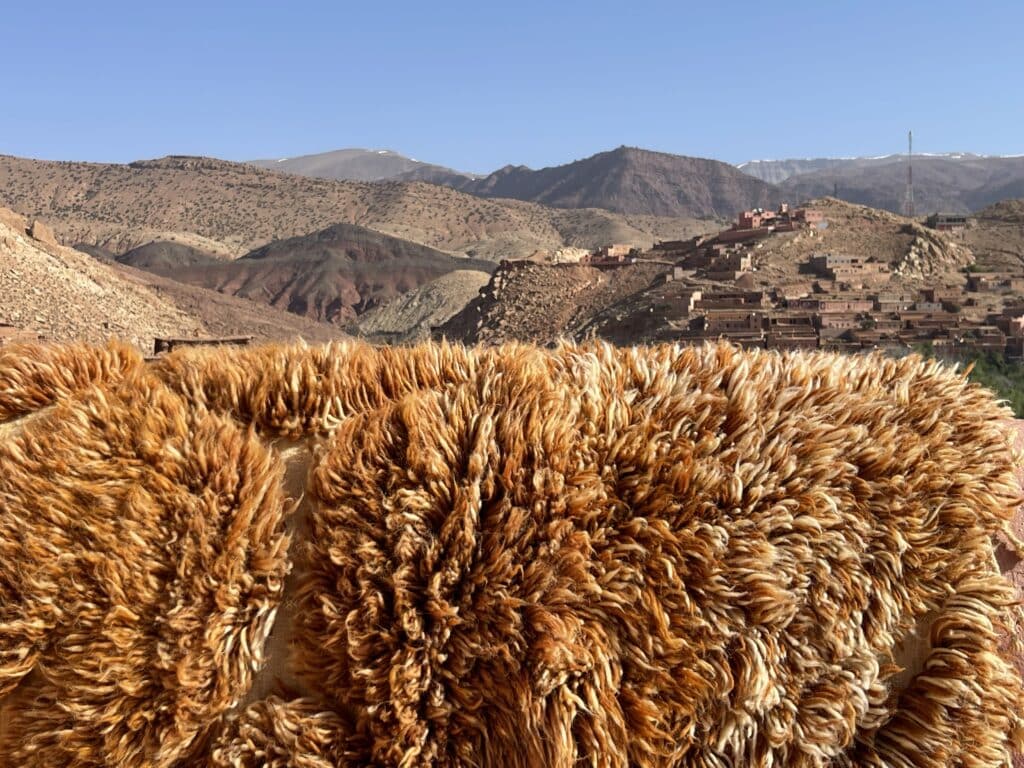
Parmar and Echavarria were unequivocal in their decision to use the traditional Siroua wool from local herds, whose coat can create a soft, dense yarn, perfect for rugmaking. The wool is directly sourced from local shepherds, cutting out any confusion over where the rug wool is originally sourced. ‘It has been a journey to get this wool. It is a commitment made to the community to source it on a long-term basis,’ comments Echavarria.

As the project is all about honesty and authenticity, the pair also took a deep dive into the weaving process and decided the rug had to use the original Berber knot, which is tied around two to four warps, allowing for a much chunkier pile. This technique is not always used in modern rugs from the area.
Alongside this the Talasin team opted for natural dyes. The process was begun with henna and, instead of moving on to another dye, the overriding decision was to first—in Echavarria’s words—‘own henna’ and its multivarious shades. Ingredients such as indigo, lemon and turmeric are added to the henna ‘to achieve the myraid tones of browns, yellows, reds, and greens’ as Parmar explains. Absolutely no chemicals are used in the rug-making process, and all washing is undertaken in local river water.

For an ambitious project, the plan for the weavers was probably the most challenging element. Ordovas set up a weaving cooperative with local weavers, who were asked how much they wanted to work and how much they needed to make from that work. The brand is also about to set up its own spinning workshop.
When I talk about the Base collection designs with Parmar, she shows me the patterns they first came up with, 100 designs to show off the best of the dye and the weaving. ‘I wanted to make sure all the rugs can look good sitting next to one another,’ she tells me. ‘The flatweave patterns are inspired by the strata of the land and original Berber designs. The hand-knotted rugs are a more expressive depiction of movement— like wind and sand. They have a vintage modern look. The women have a mind-blowing capacity to interpret the multiple designs we set out.’

Atelier Talasin is a large commitment to the community. Parmar says, ‘From rethinking the project’s goals to align with the founder’s aspirations and the communities’ needs, to creating a new supply chain from scratch after deep research, the intention was to create lasting value and differentiation. Authenticity, purpose, sustainability, quality and innovation have been deeply ingrained into each process.’
The Base collection made its public debut during Xtant in Mallorca. There are plans to share the Talasin story with wider audience that appreciates the brand’s ethical and transparent production. For today, what is luxury if it is not about authenticity?

